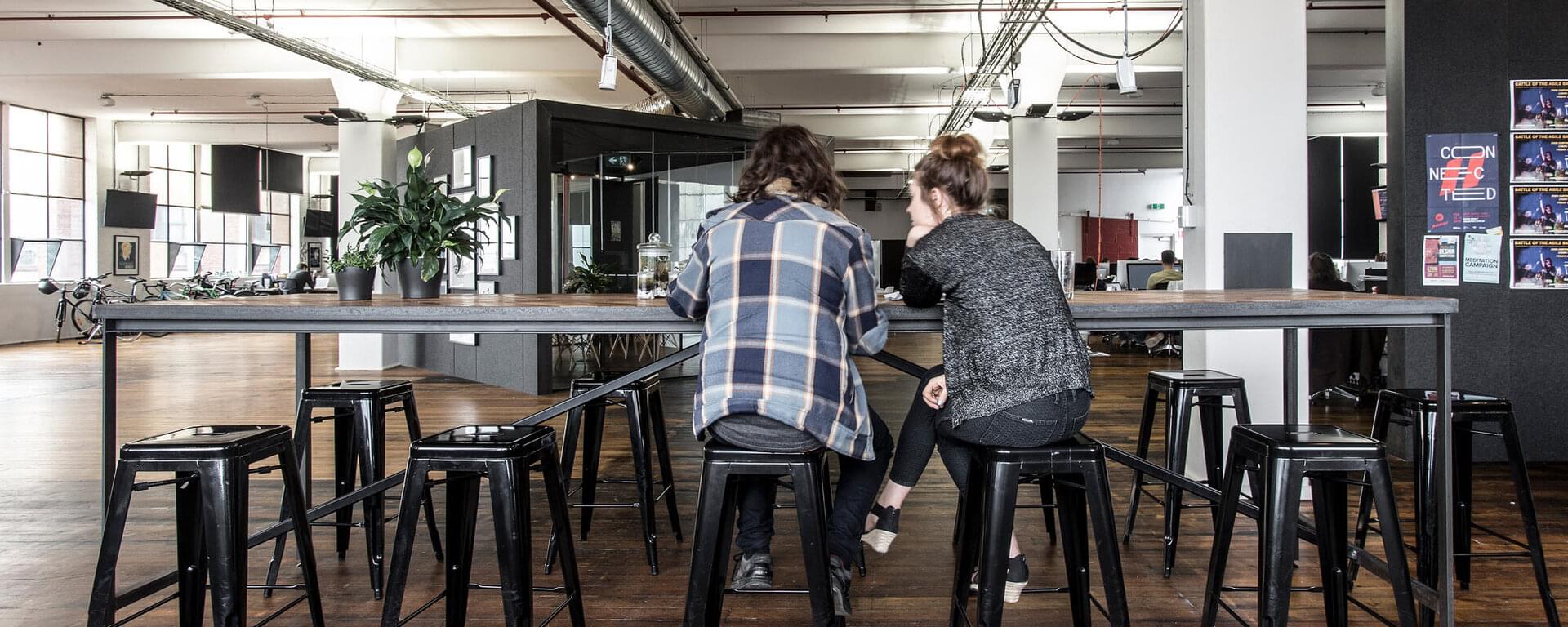“Having everything all in one place, with easier to use products, has definitely been a plus for us.”
– Zach Kulas
Director of Global Support at 99designs
30,000
Tickets/Month/Channel
24/7
Support Hours
8
Languages supported
97%
Chat CSAT
Creativity makes anything possible. That’s the mantra that fuels 99designs, the global creative platform that makes it easy for designers and clients to work together. Since 2008, 99designs has connected over a million businesses to freelance designers who have the tools and artistic know-how to make brand visions a reality.
The platform’s two sets of users present a unique challenge for the support team at 99designs, as they manage relationships with both businesses and freelance designers. “We want to help every client get a design they love,” said Zach Kulas, Director of Global Support. “And on the designer side, we want to help them land clients and develop as many ongoing relationships as we can.”
To reach its goals—and serve its international clients—99designs offers round-the-clock support from their offices in Melbourne, Berlin and Oakland. The teams are also supported by a worldwide network of remote agents. As for channels, 99designs offers clients the full experience—email, chat, phone and self-service—in eight languages.
Before migrating their entire support stack over to Zendesk’s omnichannel solution, 99designs used a different vendor for each of its channels: Desk.com for email, SwitchFox for phone support, and Olark for chat. For Kulas and his support team, drawing insights from segmented channels proved frustrating. “Managing, maintaining updates, and reporting through three different companies was arduous and not fun to do,” said Kulas.

Constant frustration pushed 99designs to evaluate new tools. This time, a seamless, all-in-one solution was at the top of their wish list. After weighing their options, the 99designs team narrowed it down to two solutions: Zendesk and Salesforce Service Cloud. “Zendesk is much more intuitive and user friendly,” said Kulas. “I definitely feel like I could work out how to use Zendesk by looking and digging around myself, whereas I couldn’t do that with Salesforce.”
Zendesk’s simple interface was another deciding factor for the 99designs team. “We’re a design company,” said Kulas, “and we all liked the design aesthetic of the Zendesk solution better”
Once 99designs decided to adopt an omnichannel solution with Zendesk—using Support for email, Chat for chat, Talk for phone, and Guide for self-service—the team onboarded immediately. “I’m a big fan of the ease of use and simplicity of adoption,” said Kulas. “It took us only two days to get chat and phones completely switched over—we moved over one in one afternoon and the other the next afternoon, by ourselves.”

Once fully onboarded, 99designs customised its instance using the Zendesk API. When a client signs up for an account with 99designs, the client provides their phone number. So 99designs built a capability in the backend that connects client profile information to a caller ID. In this way, when a client calls the support team, all client information is readily available at the agent’s fingertips. “Just based on a caller display, an agent knows exactly who the client is and can pull up what they’re using our site for,” said Kulas. “Agents can help the client find exactly what they’re looking for without asking, ‘What’s your email address so I can search our admin tool for you?’”
Kulas and team are also taking advantage of the Zendesk Apps Marketplace. “I love the Five Most Recent app,” said Kulas. “That was one of the main things we were discussing when we first brought over all channels into Zendesk—before, if someone called and left a voicemail and then was chatting or sent two emails, our agents had no way to see all of those tickets.”
“Now we can get a call and see that a client left a voicemail five minutes ago and also sent us two emails 30 and 45 minutes ago. Then when we talk to them on the phone, we’re able to go in and solve all of the tickets as one.”
With Zendesk, 99designs finally has visibility on its entire omnichannel support instance. “We’re learning a lot more about our calls, chats and emails because now we’re able to have them all in one place,” said Kulas. “We’re able to tag tickets, understand reasons, and change things pretty easily. It’s a huge plus for us.”

Zendesk gives 99designs insights into the reasons clients request refunds. Because the company offers a money-back guarantee, they want to understand why people are cancelling, so they can minimise negative experiences in the future. To develop this understanding, 99designs requires that clients give them a call before the refund is issued. When the client calls, the 99designs team has all the client data available in front of them, so they can better deduce pain points and use the information to make improvements to the product.
In addition to gathering qualitative feedback during phone calls, the 99designs team also captures client satisfaction at the resolution of chat conversations, earning, on average, a 97 per cent CSAT rating. With a distributed team, it’s essential that Kulas and the leaders of the support team understand how agents are performing. “I like being able to get real-time feedback on specific agents, especially since our chat agents aren’t sitting in the same offices as any of us,” said Kulas. “It’s good to be able to see that quickly and easily.”
As the design company continues to take on new freelancers and clients, they are constantly growing their support team—and need software that can grow alongside them. With Zendesk, Kulas is able to instantaneously add agents to the 99designs team. “Being able to go and push a few buttons and buy a new phone number and then assign it to a specific agent in another minute, has always been super easy,” said Kulas. “I love the set-up feature.”

Next on the horizon for 99designs? Bolstering up self-service with Zendesk Guide—ensuring that each help centre article is as robust as possible to maximise ticket deflection. The team began utilising Guide to reduce inbound chats. “We recently implemented Guide in our chat widget, so that when you start typing a question it’s giving suggestions for help articles,” said Kulas.
While Guide reduces ticket volume, it increases something, too—organic web traffic coming to the 99designs site. “We’re doing a lot of tracking because we found that we’re getting a fair number of organic Google searches to our help centre,” said Kulas. “When someone is looking up a design term—vectorised logo, for example—our help centre is coming up and we’re getting traffic.” By maintaining a well-developed help centre with Guide, the 99designs support team are consequently increasing the reach of their brand.
As 99designs continues to grow and refine its client experience, the Zendesk team is always available to offer support and guidance. “Zendesk keeps me on my toes,” said Kulas. “We have bi-weekly meetings where we check in and I share reports—it drives me to work harder.”



